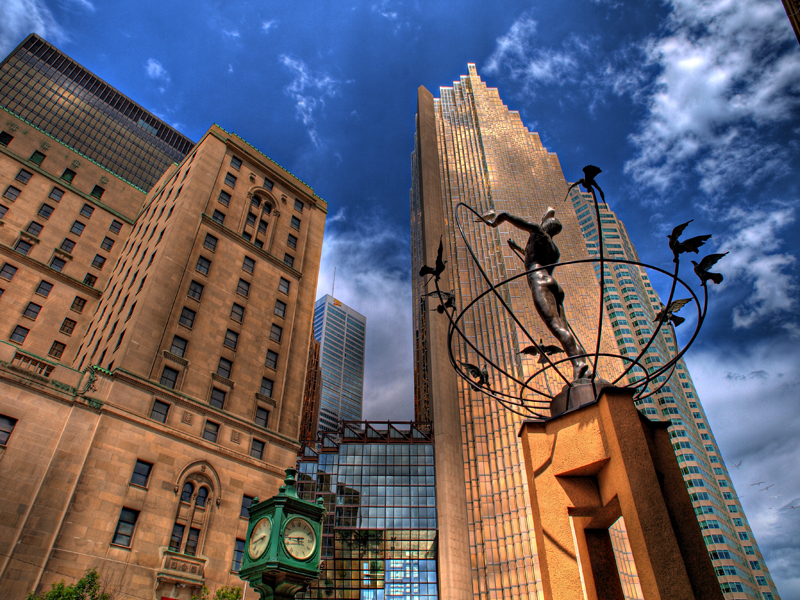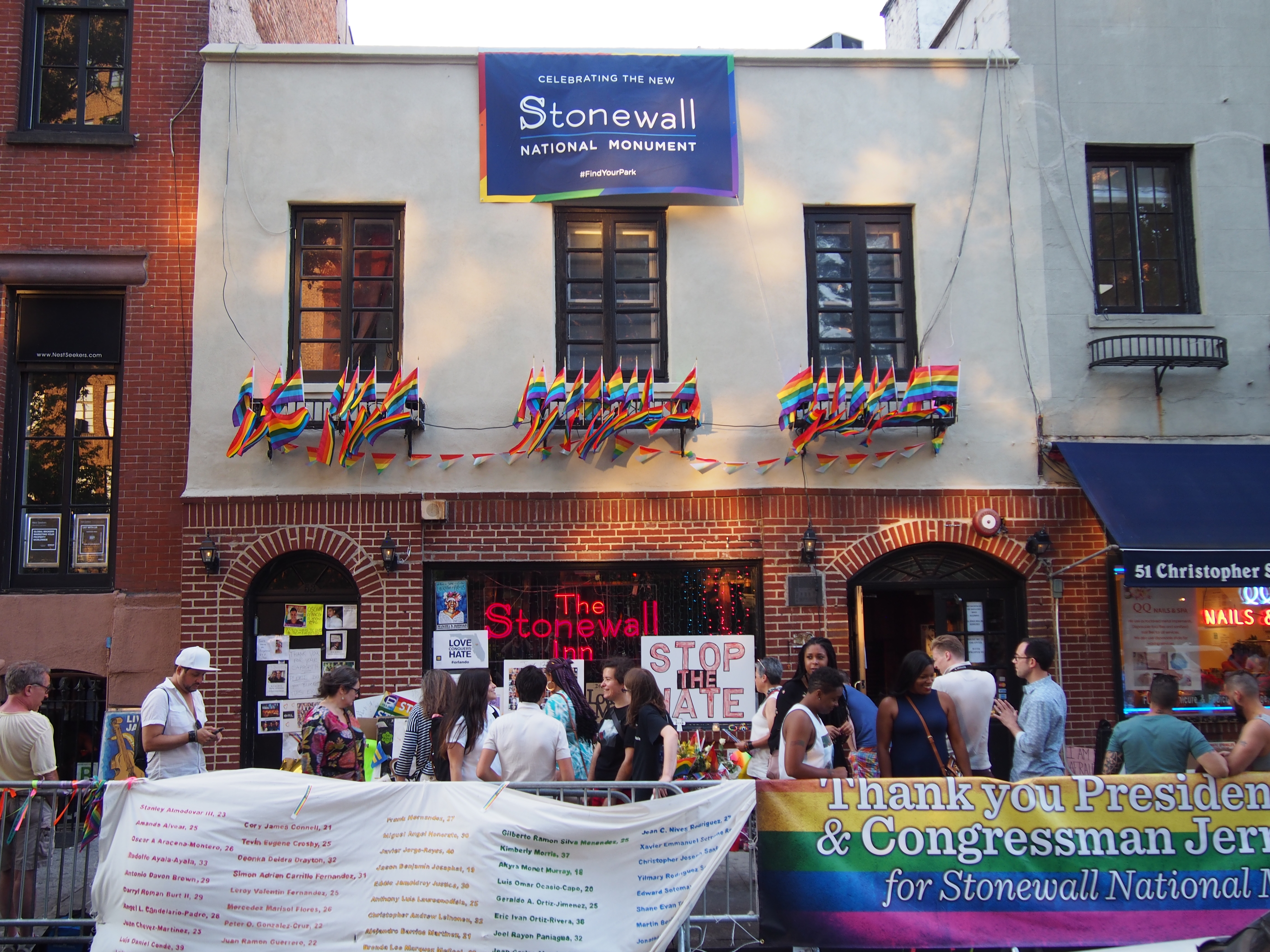|
Castro Theatre
The Castro Theatre is a historic movie palace in the Castro District of San Francisco, California. The venue became San Francisco Historic Landmark #100 in September 1976. Located at 429 Castro Street, it was built in 1922 with a California Churrigueresque façade that pays homage—in its great arched central window surmounted by a scrolling pediment framing a niche—to the basilica of Mission Dolores nearby. Its designer, Timothy L. Pflueger, also designed Oakland's Paramount Theater and other movie theaters in California during that period. The theater has more than 1,400 seats (approx. 800 downstairs and 600 in the balcony). Location and history The Castro Theatre originally opened at 479 Castro Street in 1910. It was subsequently remodeled into a retail store (currently occupied by Cliff's Variety, since 1971) in the mid-1920s after the larger Castro Theatre was built at 429 Castro Street, its current location, only a few doors up from the original theatre. The Ca ... [...More Info...] [...Related Items...] OR: [Wikipedia] [Google] [Baidu] |
San Francisco
San Francisco, officially the City and County of San Francisco, is a commercial, Financial District, San Francisco, financial, and Culture of San Francisco, cultural center of Northern California. With a population of 827,526 residents as of 2024, San Francisco is the List of California cities by population, fourth-most populous city in the U.S. state of California and the List of United States cities by population, 17th-most populous in the United States. San Francisco has a land area of at the upper end of the San Francisco Peninsula and is the County statistics of the United States, fifth-most densely populated U.S. county. Among U.S. cities proper with over 250,000 residents, San Francisco is ranked first by per capita income and sixth by aggregate income as of 2023. San Francisco anchors the Metropolitan statistical area#United States, 13th-most populous metropolitan statistical area in the U.S., with almost 4.6 million residents in 2023. The larger San Francisco Bay Area ... [...More Info...] [...Related Items...] OR: [Wikipedia] [Google] [Baidu] |
Castro Street Station
Castro station is a Muni Metro station at the intersection of Market Street, Castro Street, and 17th Street in the Castro District of San Francisco, California. The underground station is served by the K Ingleside, M Ocean View, L Taraval and S Shuttle lines. The F Market line serves the station on the street level at 17th and Castro. Station layout and history The station consists of two side platforms next to the tracks on the second level down with the concourse mezzanine level overlooking it. Uniquely among Muni Metro stations, the platforms are slightly curved due to the transition from the Market Street subway to the Twin Peaks Tunnel between this station and the now-disused Eureka Valley station, just southwest. At both Castro and , there is only one entrance on each side of Market Street leading into the station. (All other stations on the Market Street subway have entrances spread out along the length of the station.) The southern entrance is located in H ... [...More Info...] [...Related Items...] OR: [Wikipedia] [Google] [Baidu] |
Frameline
The Frameline Film Festival (also known as San Francisco International LGBTQ+ Film Festival and formerly known as San Francisco International LGBT Film Festival; San Francisco International Lesbian and Gay Film Festival) is an annual event that screens and celebrates films by and about LGBTQ people, established in 1976. The festival is organized by Frameline, a nonprofit media arts organization whose mission statement is "to change the world through the power of queer cinema". It is the oldest LGBTQ+ film festival in the world. With annual attendance ranging from 60,000 to 80,000, it is the largest LGBTQ+ film exhibition event. It is also the most well-attended LGBTQ+ arts event in the San Francisco Bay Area. The festival is held every year in late June according to a schedule that allows the eleven-day event's closing night to coincide with the City's annual Gay Pride Day, which takes place on the last Sunday of the month. History The festival began as a storefront event in ... [...More Info...] [...Related Items...] OR: [Wikipedia] [Google] [Baidu] |
San Francisco International Film Festival
The San Francisco International Film Festival (abbreviated as SFIFF), organized by SFFILM, is held each spring for two weeks, presenting around 200 films from over 50 countries. The festival highlights current trends in international film and video production with an emphasis on work that has not yet secured U.S. distribution. In 2009, it served around 82,000 patrons, with screenings held in San Francisco and Berkeley."San Francisco Film Festival Bucks Economic Trends to Set New Records for Revenue and Attendance." sffs.org. 7 May 2009. San Francisco Film Society. 29 June 2009 In March 2014, Noah Cowan, former executive director of the Toronto International Film Festival, became executive director of the SFFS and SFIFF, replacing Ted Hope. Prior to Hope, the festival was briefly headed by Bingham Ray, who served as SFFS executive director until his death after only ten weeks on the job in January 2012. Graham Leggat became the executive director of the San Francisco Film Society ... [...More Info...] [...Related Items...] OR: [Wikipedia] [Google] [Baidu] |
Multicultural
Multiculturalism is the coexistence of multiple cultures. The word is used in sociology, in political philosophy, and colloquially. In sociology and everyday usage, it is usually a synonym for ''ethnic'' or cultural pluralism in which various ethnic and cultural groups exist in a single society. It can describe a mixed ethnic community area where multiple cultural traditions exist or a single country. Groups associated with an indigenous, aboriginal or autochthonous ethnic group and settler-descended ethnic groups are often the focus. In reference to sociology, multiculturalism is the end-state of either a natural or artificial process (for example: legally controlled immigration) and occurs on either a large national scale or on a smaller scale within a nation's communities. On a smaller scale, this can occur artificially when a jurisdiction is established or expanded by amalgamating areas with two or more different cultures (e.g. French Canada and English Canada). On a lar ... [...More Info...] [...Related Items...] OR: [Wikipedia] [Google] [Baidu] |
LGBT
LGBTQ people are individuals who are lesbian, gay, bisexual, transgender, queer, or questioning. Many variants of the initialism are used; LGBTQIA+ people incorporates intersex, asexual, aromantic, agender, and other individuals. The group is generally conceived as broadly encompassing all individuals who are part of a sexual or gender minority, including all sexual orientations, romantic orientations, gender identities, and sex characteristics that are not heterosexual, heteroromantic, cisgender, or endosex, respectively. Scope and terminology A broad array of sexual and gender minority identities are usually included in who is considered LGBTQ. The term ''gender, sexual, and romantic minorities'' is sometimes used as an alternative umbrella term for this group. Groups that make up the larger group of LGBTQ people include: * People with a sexual orientation that is non-heterosexual, including lesbians, gay men, bisexual people, and asexual people * People ... [...More Info...] [...Related Items...] OR: [Wikipedia] [Google] [Baidu] |
Film Festival
A film festival is an organized, extended presentation of films in one or more movie theater, cinemas or screening venues, usually annually and in a single city or region. Some film festivals show films outdoors or online. Films may be of recent date and depending upon the festival's focus, can include international and/or domestic releases. Some film festivals focus on a specific format of film, such Documentary film, documentary, or runtime, such as short film festivals, or genre, such as horror films, category of filmmakers, such as Woman, women, production country/region or subject matter. Film festivals can be competitive or non-competitive, and are often regarded within the film industry as launchpads for new filmmakers and indie films, as well as boosters for established filmmakers and studio productions. The films are either invited by festival curators, or selected by festival programmers from submissions made by the filmmakers, film producers, production companies, sale ... [...More Info...] [...Related Items...] OR: [Wikipedia] [Google] [Baidu] |
Film
A film, also known as a movie or motion picture, is a work of visual art that simulates experiences and otherwise communicates ideas, stories, perceptions, emotions, or atmosphere through the use of moving images that are generally, since the 1930s, synchronized with sound and (less commonly) other sensory stimulations. Etymology and alternative terms The name "film" originally referred to the thin layer of photochemical emulsion on the celluloid strip that used to be the actual medium for recording and displaying motion pictures. Many other terms exist for an individual motion-picture, including "picture", "picture show", "moving picture", "photoplay", and "flick". The most common term in the United States is "movie", while in Europe, "film" is preferred. Archaic terms include "animated pictures" and "animated photography". "Flick" is, in general a slang term, first recorded in 1926. It originates in the verb flicker, owing to the flickering appearance of early films ... [...More Info...] [...Related Items...] OR: [Wikipedia] [Google] [Baidu] |
Pipe Organ
The pipe organ is a musical instrument that produces sound by driving pressurised air (called ''wind'') through the organ pipes selected from a Musical keyboard, keyboard. Because each pipe produces a single tone and pitch, the pipes are provided in sets called ''ranks'', each of which has a common timbre, volume, and construction throughout the keyboard Compass (music), compass. Most organs have many ranks of pipes of differing pitch, timbre, and volume that the player can employ singly or in combination through the use of controls called Organ stop, stops. A pipe organ has one or more keyboards (called ''Manual (music), manuals'') played by the hands, and most have a Pedal keyboard, pedal clavier played by the feet; each keyboard controls its own division (group of stops). The keyboard(s), pedalboard, and stops are housed in the organ's Organ console, ''console''. The organ's continuous supply of wind allows it to sustain notes for as long as the corresponding keys are pressed, ... [...More Info...] [...Related Items...] OR: [Wikipedia] [Google] [Baidu] |
Wurlitzer
The Rudolph Wurlitzer Company, usually referred to as simply Wurlitzer, is an American company started in Cincinnati in 1853 by German immigrant (Franz) Rudolph Wurlitzer. The company initially imported stringed, woodwind and brass instruments from Germany for resale in the United States. Wurlitzer enjoyed initial success, largely due to defense contracts to provide musical instruments to the U.S. military. In 1880, the company began manufacturing pianos and eventually relocated to North Tonawanda, New York. It quickly expanded to make fairground organ, band organs, orchestrions, player pianos and pipe organs, pipe or theatre organs popular in theatres during the days of silent movies. Wurlitzer also operated a chain of retail stores where the company's products were sold. As technology evolved, Wurlitzer began producing Wurlitzer electric piano, electric pianos, electronic organs and jukeboxes, and it eventually became known more for jukeboxes and vending machines, which are s ... [...More Info...] [...Related Items...] OR: [Wikipedia] [Google] [Baidu] |
Wallace Reid
William Wallace Halleck Reid (April 15, 1891 – January 18, 1923) was an American actor in silent film, referred to as "the screen's most perfect lover". He also had a brief career as a racing driver. Early life Reid was born in St. Louis, Missouri, into a showbusiness family. His mother, Bertha Westbrook, was an actress, and his father, James Halleck "Hal" Reid, worked successfully in a variety of theatrical jobs, mainly as playwright and actor, traveling the country. As a boy, Wallace Reid was performing on stage at an early age, but acting was put on hold while he obtained an education at Freehold Military School in Freehold Township, New Jersey. He later graduated from Perkiomen Seminary in Pennsburg, Pennsylvania in 1909. A gifted all-around athlete, Reid participated in a number of sports while also following an interest in music, learning to play the piano, banjo, drums, and violin. As a teenager, he spent time in Wyoming, where he learned to be an outdoorsman. ... [...More Info...] [...Related Items...] OR: [Wikipedia] [Google] [Baidu] |
Across The Continent
''Across the Continent'' is a lost at silentera.com released by in June 1922, and was one of star 's last performances. This film was also the opening night film of the Castro Theatre in |





